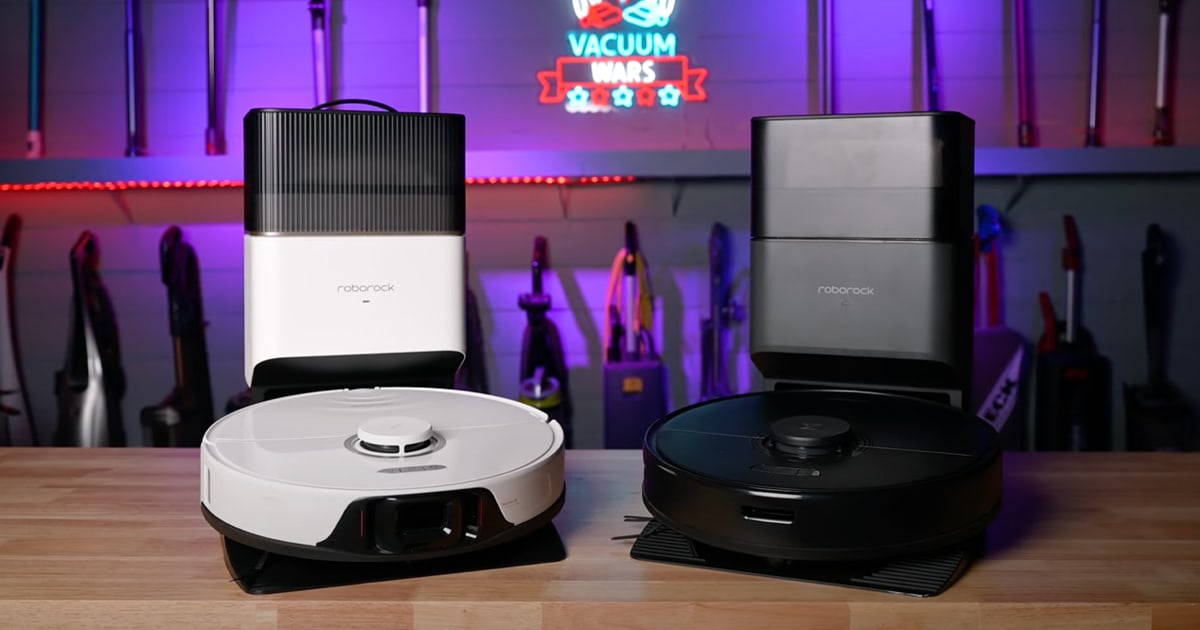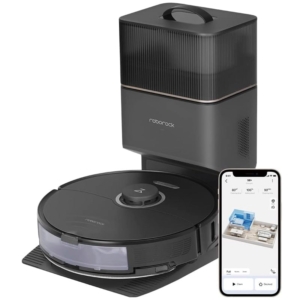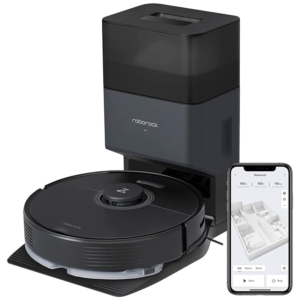In this review, we are going to compare two robot vacuums from Roborock: the Roborock S8+ vs the Roborock Q7 Max+. With Roborock’s lineup becoming more and more extensive, it can be difficult to know which model is better than the other, and these two are very similar.
They are both LiDAR-equipped robot vacuums with auto-empty bins and mop attachments, and they sell for similar prices. Let’s take a deep dive to see if it’s worth spending the extra money on the S8+, which is slightly more expensive than the Q7 Max+.
Features
The first round is all about features. As mentioned, the S8+ and Q7 Max+ have LiDAR and navigate in the same way using a spinning invisible laser mounted to the robot’s top.
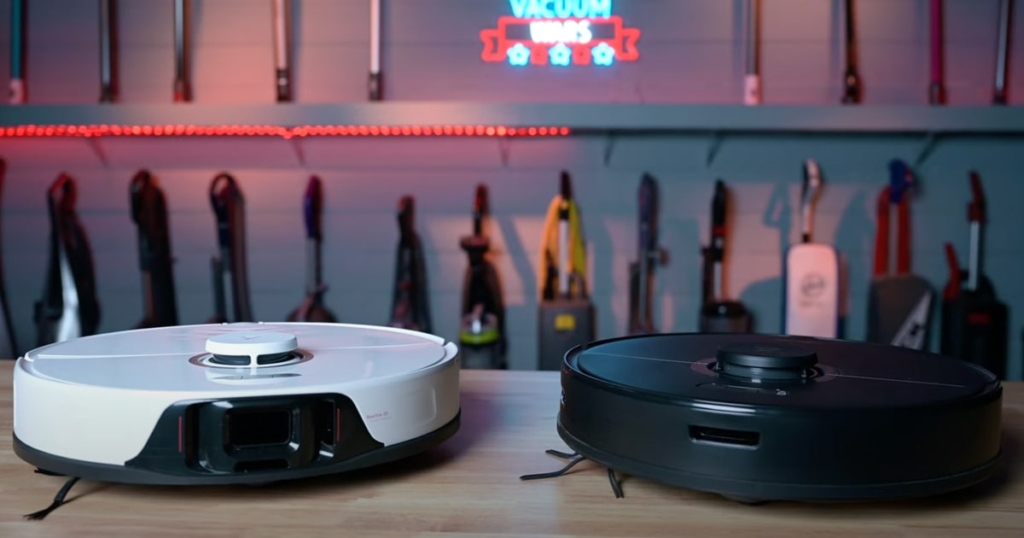
They both also have one of our favorite features: auto-empty dust bins. When the robot finishes its cleaning job and returns to the bin, a motor in the base kicks in and sucks the debris out of the robot’s dust bin and into the included disposable bag.
When it came to picking up surface debris on both hard floors and carpets, arguably the main job of a robot vacuum, both the Q7 Max+ and S8+ were incredibly good…
Both robots are equipped with electric mopping, allowing you to control the water flow in the app. And they also have pressurized mopping, which puts pressure down on the floor for a better clean.
As for their apps, they have basically the same features, including Wi-Fi capability, zone cleaning, room cleaning, multi-floor mapping, no-go zones, no-mop zones, quick mapping, advanced scheduling, voice control, and 3D mapping.
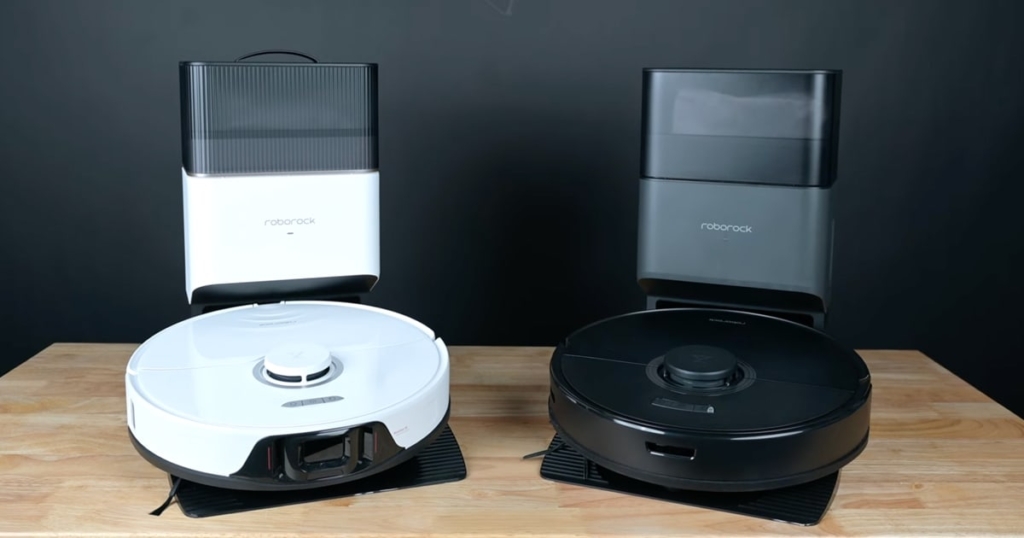
The S8+ has lots of new features. One that is incredibly useful is 3D obstacle avoidance. It uses structured light and infrared imaging to avoid obstacles that are too low for LiDAR to pick up.
Curious about what the best-of-the-best has to offer? See our Roborock S8 Pro Ultra review!
The S8+ did very well in our obstacle avoidance evaluation, getting the same score (9 out of 12) as the best robots on the market with this feature. We did not evaluate the Q7 Max+ with this assessment since it does not have front-mounted obstacle avoidance sensors like the S8+.
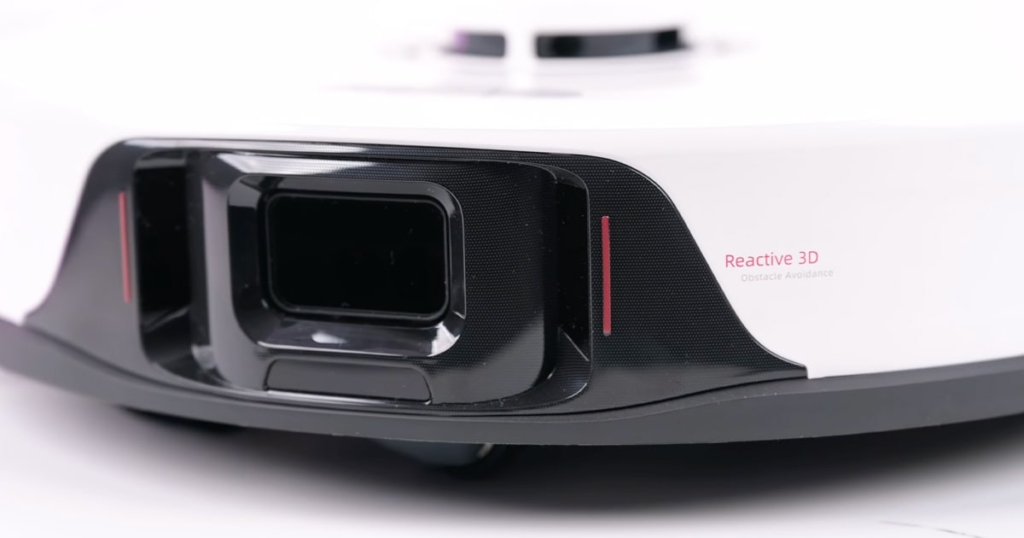
The S8+ also has auto mop lifting, which means that it automatically lifts the mop when it detects carpet. This is a game-changer because it allows you to both vacuum and mop in the same run. It also has vibrating mop pads, which lead to better cleaning overall. These features make for much more efficient mopping than with the Q7 Max+.
Lastly, the S8+ has a dual brush roll that Roborock claims is better for deep cleaning and preventing hair tangles. As you can see, both of these robot vacuums have a significant amount of extras that less expensive robot vacuums don’t. That being said, the S8+ scored significantly higher than the Q7 Max+ in the features round.
Performance
Moving on to the performance category, where we take into account the bench assessments that we do in the studio, like airflow and suction evaluations, but also a variety of pickup and mopping evaluations.

When it came to picking up surface debris on both hard floors and carpets, arguably the main job of a robot vacuum, both the Q7 Max+ and S8+ were incredibly good, picking up everything from fine to extra-large debris on both hard floors and carpets.
The same was true with mopping. Though the S8+ has extra features like auto mop lifting and vibrating mop pads that make it more efficient, both robot vacuums did incredibly well with mopping up, not just wet stains but stuck-on stains as well.
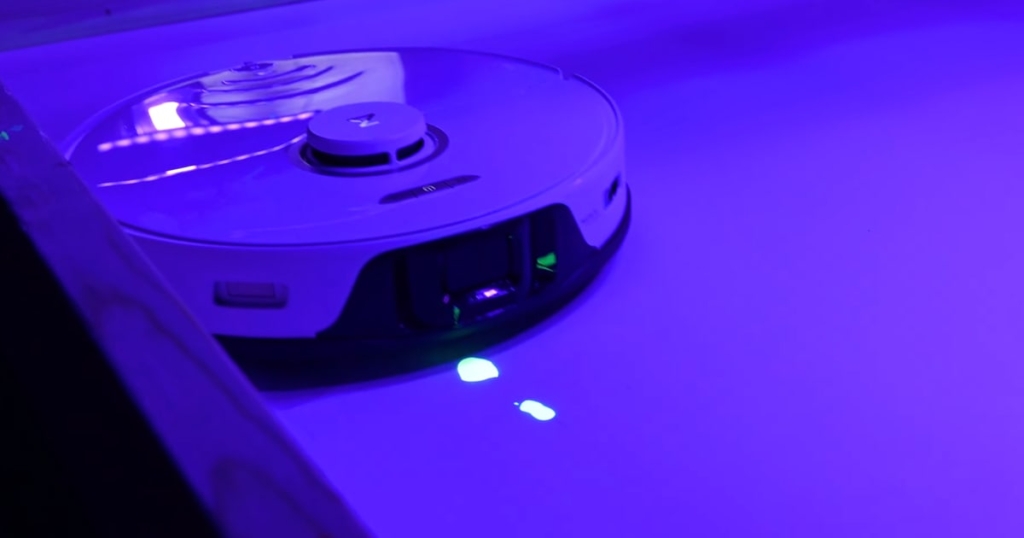
The Q7 Max+ had slightly more raw power in our evaluations when it came to suction and airflow. This power showed up with things like the crevice pickup assessment, where it did a bit better than the S8+. While the Q7 Max+ also did slightly better on the carpet deep clean evaluation, both robots were well above average at deep cleaning ability on carpets.
After adding up the totals for just the performance category, the Q7 Max+ scored higher than the S8+.
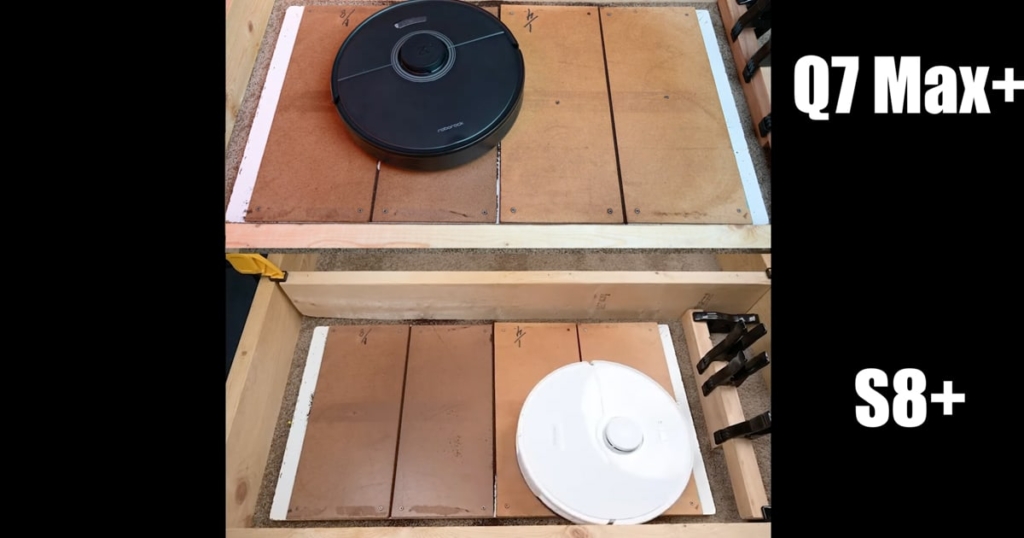
Navigation
The next category is navigation. We have both robot vacuums clean a standardized floor plan in different modes and with different power settings where applicable. In the navigation assessment, both were incredibly fast.
In fact, they are the fastest navigating and most efficient robots we’ve ever evaluated, including those at the top of the line, and they had virtually identical scores. The Q7 Max+ covered 0.88 square meters per minute compared to the S8+, which scored 0.885 square meters per minute. So it was basically a tie.
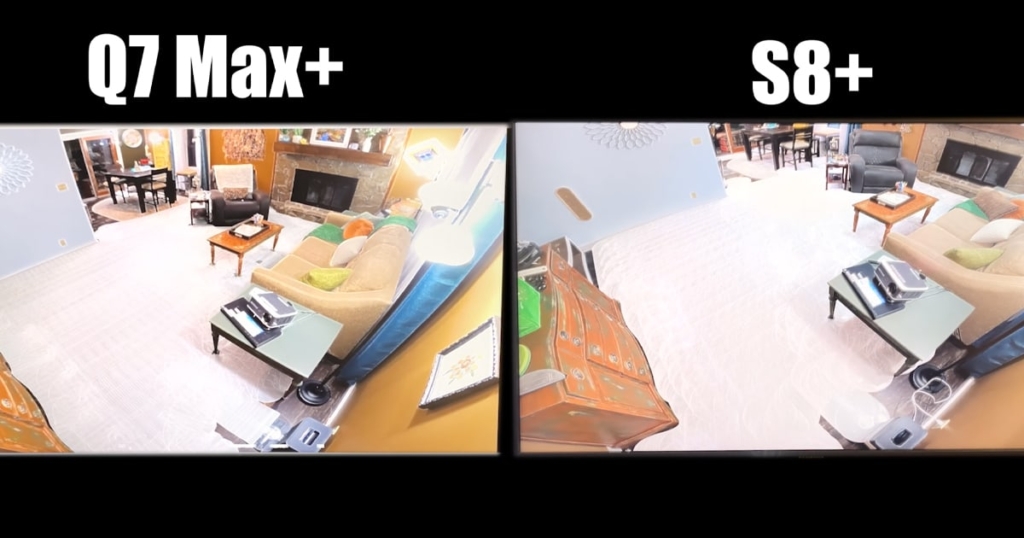
But it’s not just about speed. We also take into account their coverage, and the Q7 Max+ covered a little more area per run than the S8+, but nothing major, and both scores are higher than average. This evaluation also helps us get an idea of how good their battery life is, which we do by taking average measurements of how their battery depletes per square meter on different power settings.
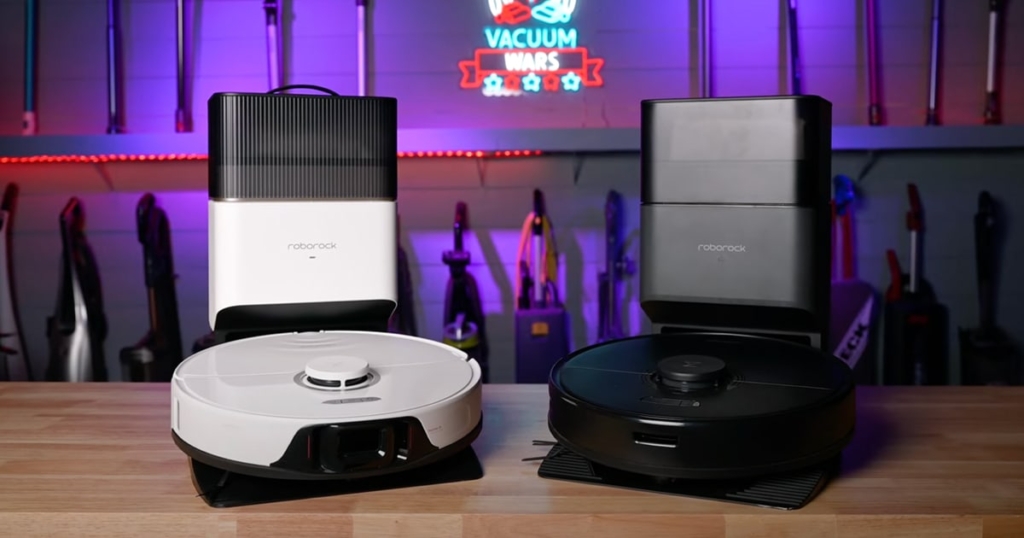
We found that the Q7 Max+ had better battery efficiency at 2.04 minutes per percentage point to 1.61 minutes on the Q7. If you run the calculations based on this data, the Q7 Max+ could cover roughly 1900 square feet per battery charge compared to 1500 square feet per charge on the S8+. But take these numbers with a grain of salt because there are a lot of variables that can change them in your situation.
So, without taking obstacle avoidance into account, the navigation scores are very close: 26 for the Q7 MAX+ and 25 for the S8+, with both robots being much better than average.
Winner: Roborock S8+
After adding up all the scores, we have the Roborock S8+ beating the Roborock Q7 Max+ 330 to 279. With the prices being so similar and considering that both robots are basically the same in terms of navigation efficiency and performance, the extra features on the S8+ make it extremely useful.
Its auto-lifting mop and optical avoidance are game-changers, and you also have the option to upgrade to the Ultra Dock with the S8+, which you can’t with the Q7 Max+.
All of this to say, while both of these robot vacuums are great options that are way better than the average product, we choose the S8+ with its extra features as a no-brainer.
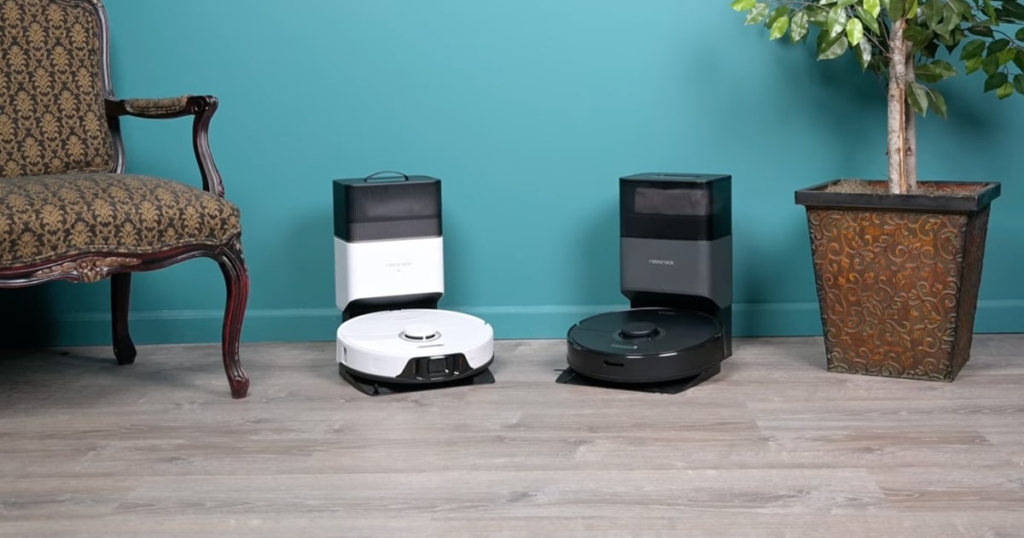
Roborock S8+ vs Q7 Max+: Features & Specifications
| Roborock S8+ | Roborock Q7 Max+ | |
|---|---|---|
| Navigation | LiDAR | LiDAR |
| Wi-Fi | Yes | Yes |
| Room Cleaning | Yes | Yes |
| Zone Cleaning | Yes | Yes |
| No-Go Zones | Yes | Yes |
| Virtual Walls | Yes | Yes |
| Obstacle Avoidance/AI | Yes | No |
| Mopping | Yes | Yes |
| Sonic Mopping | Yes | No |
| Auto-Lift Mop Pad | Yes | No |
| Auto-Empty | Yes | Yes |
| Mop Pad Management | No | No |
| Real-Time Monitoring | Yes | Yes |
| Battery Capacity | 5200mAh | 5200mAh |
| Max Run Time | 180 min | 180 min |
| Suction | 6000Pa | 4200Pa |
Roborock S8+ vs Q7 Max+: Test Results
| Roborock S8+ | Roborock Q7 Max+ | |
|---|---|---|
| Obstacle Avoidance | 9 | – |
| Suction (Max Power) | 0.90kpa | 0.60kpa |
| Airflow (Max Power) | 12 CFM | 15 CFM |
| Carpet Deep Clean Test | 84 | 86 |
| Navigation Efficiency | 0.885 m2/min | 0.88 m2/min |
| Total Coverage | 31 m2 | 32 m2 |
| Battery Efficiency | 1.51 min/% | 2.04 min/% |
| Est. Coverage/Charge | 1,500 sq. ft. | 1,900 sq. ft. |
| Vacuum Wars Final Score | 330 | 279 |
| Where to Buy | Amazon | Amazon |
